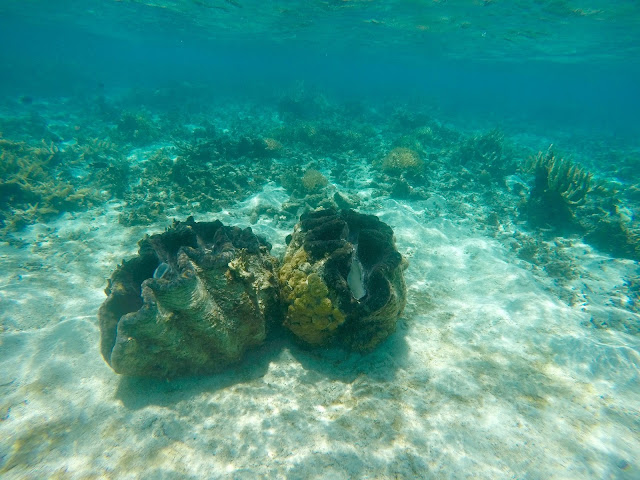Close Encounters
We had a couple of strange experiences ...
We've mentioned the regular fly-overs by Border Patrol. It's hard to capture a good picture of the plane, but I tried. When I saw this photo I realised perhaps they weren't interested in us at all; it seemed they were chasing a UFO!
Closer inspection was not very enlightening, but we concluded that a moth had flown in front of my iphone at the moment I snapped the shot.
But what was a moth doing on the outer reef? And what was this tiny bird that we found perched on the Genoa sheet doing out there, either?
We identified it as a Rainbow Bee-eater and can only assume it got blown off course.
Unless it too was chasing the moth, thinking it was a bee. In which case it was merely confused. Either way ...
We saw plenty of other birds which were supposed to be out there, like terns and Noddies, which made for a pretty picture at sunset.
One even came to visit and rested awhile on our bowsprit.
Which would have been fine, had it not invited all its friends.
It was a simple choice; scrub the roof, decks, solar panels and hatches free of bird poo every morning, or find a means to scare the birds away. George tried many techniques, including an air horn, humming bird tape (it almost drove us off the boat), loud clapping, thumping, flashing lights and harsh language (which almost forced a choice between offloading George or the birds). In the end, after two sleepless nights, we just had to move somewhere the birds had more attractive places to roost.
This was a scene from Bait Reef, the most accessible reef to the Whitsundays and victim to the inexorable march of tourism. We were silently pleased to see the landing platforms occupied by flocks of seabirds when the helicopters were away, but did wonder how the well-heeled tourists felt as said heels sank into a welcome mat of guano.
Apart from David, who had been with us since we left the Whitsundays, our first human guests were Judy and Peter, who hopped aboard at Hamilton Island.
We also welcomed the newest member of our crew, Jack Tar, who has many skills.
He is very helpful in the kitchen.
Almost as helpful as Uncle!
After all the wining and dining, it was important to get some exercise.
After Judy, Peter and David left us, we picked up Judy and Laurence Beasley, for a cruise south to Mackay.
There was the issue of Judy's badly sprained foot (an injury acquired as she worked the fore-deck), but nobody let it bother them too much (most of all Judy) and the Alchemy lounge was put to very good use until she was able to come out for some sightseeing trips in the dinghy.
We did some more snorkelling and met some captivating reef denizens, including this Blue Spotted Fantail ray,
a large Morwong in a fish-cleaning station -
We island-hopped on the long trek south from Hamilton Island to Yeppoon, and stopped for our first night at Brampton Island, where we met the caretaker (seeing
as the resort is now defunct).
We took the dinghy to neighbouring Carlisle Island (now deserted) and forged our own bush trail to an old Melaleuca forest. It was wonderful to have to whole island to ourselves.
We took the dinghy to neighbouring Carlisle Island (now deserted) and forged our own bush trail to an old Melaleuca forest. It was wonderful to have to whole island to ourselves.

This tree brought to mind a hybrid between one of Tolkein's Ents and the Weirwood from Game of Thrones. Not sure what he thought of George adjusting his tie!

After a short stop in Mackay to pick up and install our transformer that had been left for repairs earlier in the year, we moved on. Our trip took us right through the city of ships anchored off the coal-loading jetty at Hay Point. A disturbing sight from your helm station, even when it isn't under way!
The large tides and flat sandy beaches meant that our fold-down dinghy wheels came in very handy.
We finally reached Great Keppell Island, where we stepped ashore for some more oysters.
And we bade farewell to Laurence and Judy in Rockhampton, before getting the boat ready for our next visitors, and the journey on to Bundaberg.

















































